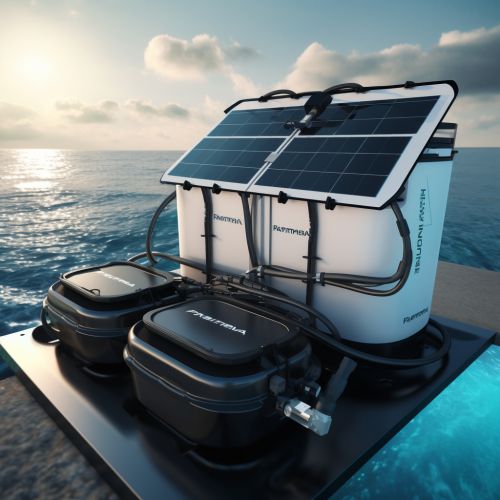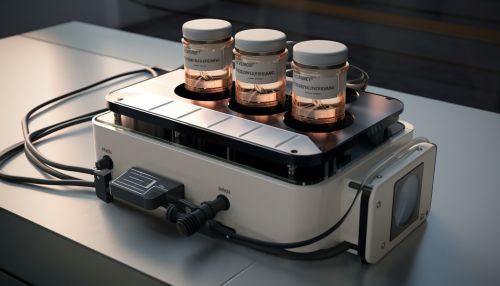Flow battery
Introduction
A flow battery is a type of rechargeable battery where rechargeability is provided by two chemical components dissolved in liquids contained within the system and most commonly separated by a membrane. This technology offers unique advantages for storing large amounts of energy, which can be beneficial in applications such as grid storage and load leveling.


Principle of Operation
Flow batteries function based on the principle of electrochemistry. The two liquid electrolytes are stored in separate tanks and are pumped through a cell or stack where they are separated by an ion exchange membrane. The electrochemical reactions occur at the electrodes, converting chemical energy into electrical energy and vice versa.
Types of Flow Batteries
There are several types of flow batteries, each with its own unique characteristics and advantages. These include the Vanadium redox battery (VRB), the Zinc-bromine battery (ZBB), and the Iron-chromium redox flow battery.
Vanadium Redox Battery
The Vanadium redox battery uses vanadium ions in different oxidation states to store chemical potential energy. The VRB has the advantage of using a single element (vanadium) in both half-cells, reducing the risk of cross-contamination.
Zinc-Bromine Battery
The Zinc-bromine battery is a type of hybrid flow battery. During discharge, zinc is plated onto the anode, while bromine is formed at the cathode. During recharge, these reactions are reversed.
Iron-Chromium Redox Flow Battery
The Iron-chromium redox flow battery uses a solution of iron and a solution of chromium as the electrolytes. This type of battery has the advantage of using abundant and non-toxic materials.
Advantages and Disadvantages
Flow batteries have several advantages over other types of batteries. They have a long cycle life, are scalable, and have a low risk of catastrophic failure. However, they also have some disadvantages such as low energy density, high initial cost, and complexity of the system.
Applications
Flow batteries are used in a variety of applications. They are particularly well-suited for large-scale energy storage, such as grid storage and load leveling. They can also be used in off-grid power systems, for electric vehicle charging, and in microgrids.
Future Developments
Research and development in the field of flow batteries is ongoing, with the aim of improving energy density, reducing costs, and developing new types of flow batteries. Some of the promising research areas include organic redox flow batteries and nanostructured membranes.
